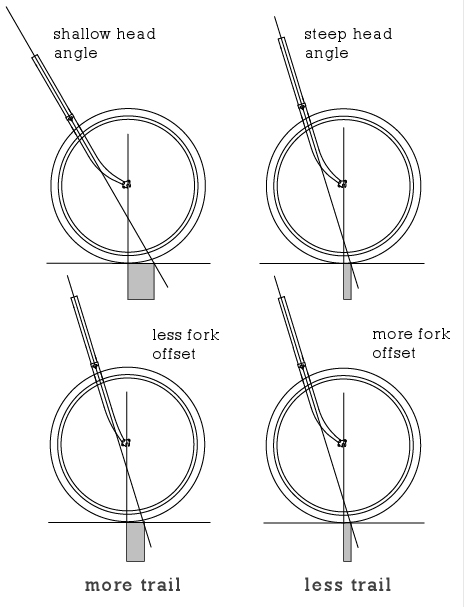Experimentation is useful once you understand the basics and those articles and diagrams explain the basics pretty well, you seem to have got it.
The truth is there’s few rules and no ‘right’ answers to all this, it’s a case of getting a feel for it. Try a couple of different rigid forks on your bike and see how it feels, honestly it’s the best answer to your question.
I think it’s all something best visualised once understood, ie where is my weight, where are my wheels, how do I want it to feel / respond – and the numbers then come together. Maybe that’s a crap answer, but after years of playing around with all this that’s as good as I can give. Theories are ok but practical experimentation is worth a lot more.
There’s also a lot of waffle out there about ‘light’ or ‘fast’ steering, ‘responsive’ etc. I think it takes so little effort to turn a bike that many bikes are too short in trail as a result of someone thinking ‘responsive’ numbers are good.. or that ‘fast’ handling is better for going fast, or twitchy feels ‘light’. That’s where having some practical experience is valuable – ie knowing roughly what +/-10mm of trail is worth.



